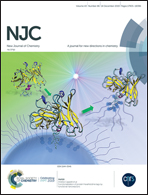Well-defined Pd anchoring on the surface of porous ZnO nanocomposites with excellent photocatalytic activity and good reusability for the removal of phenol from water
Abstract
Photocatalytic removal of phenol and its derivatives has received increasing attention since they are often discharged into the environment through wastewaters and may cause unpredictable environmental hazards and risks. Herein, porous ZnO nanosheets were initially synthesized via a simple surfactant-free route, and then were decorated with Pd nanoparticles (NPs) as well-defined Pd/ZnO nanocomposites. The well-defined Pd/ZnO nanocomposites are found to exhibit excellent photocatalytic activity and photochemical stability for the removal of phenol from water. The photocatalytic activity of Pd/ZnO nanocomposites can reach up to nearly 100% phenol decomposition in 60 min under UV light irradiation, which is about two and a half times that of pure ZnO nanosheets. Moreover, Pd/ZnO nanocomposites present good reusability with no decrease in the photocatalytic activity after four cycles of reuse. Obviously, the Pd/ZnO nanocomposites show much enhanced photocatalytic removal of phenol in comparison with the pure ZnO nanosheets. The small-sized and highly-dispersed Pd NPs deposited on the surface of ZnO nanosheets are responsible for the enhanced photocatalytic activity because they can act as electron sinks to accelerate the electron–hole separation. These highly efficient and stable Pd/ZnO nanocomposites endow themselves with promising application potential in the photocatalytic removal of phenolic pollutants in wastewater.



 Please wait while we load your content...
Please wait while we load your content...